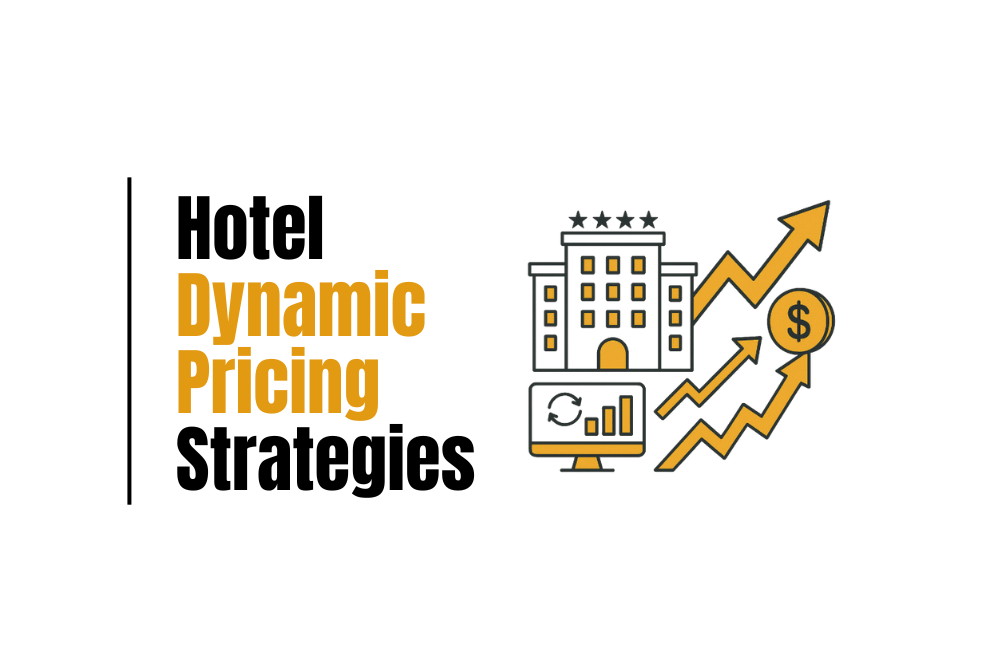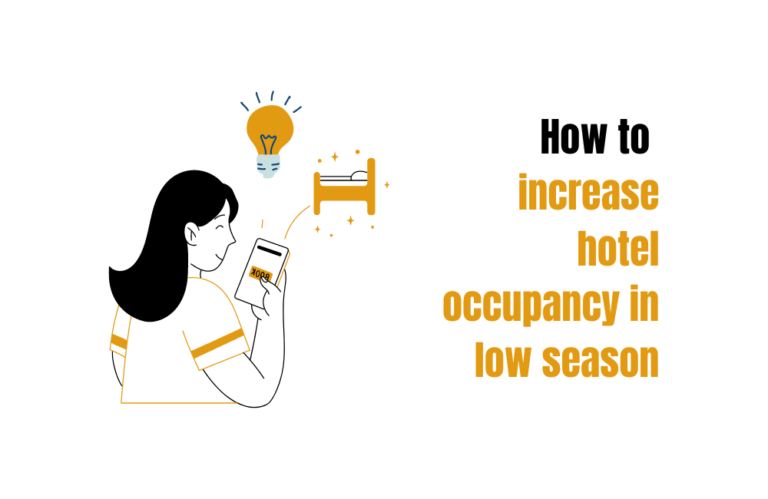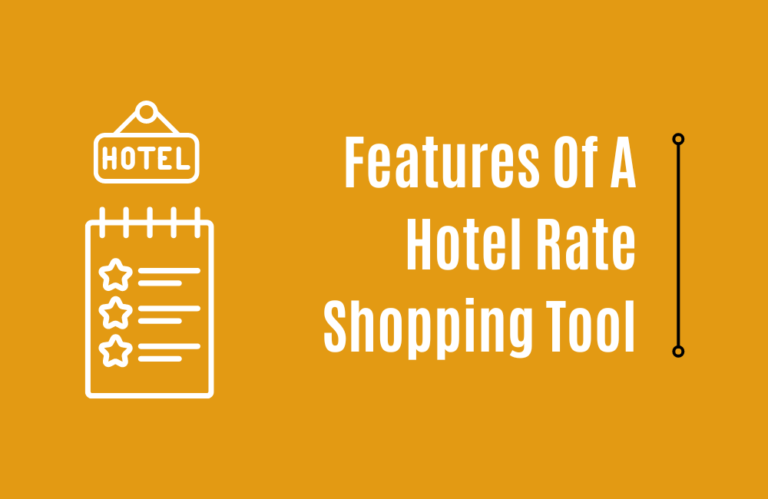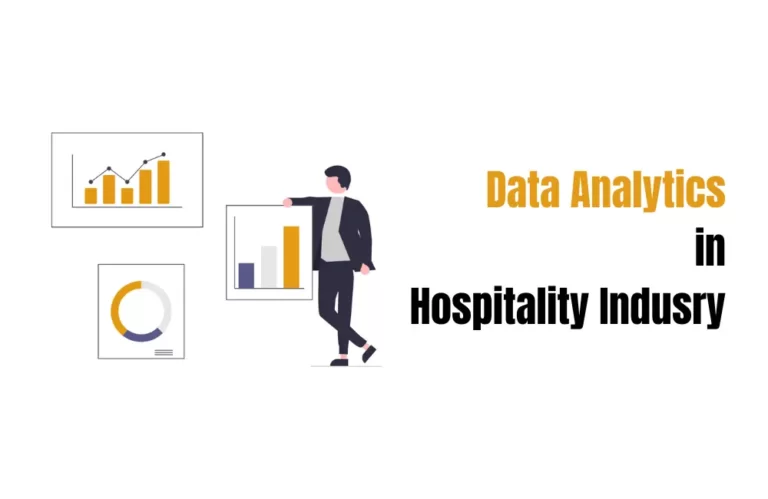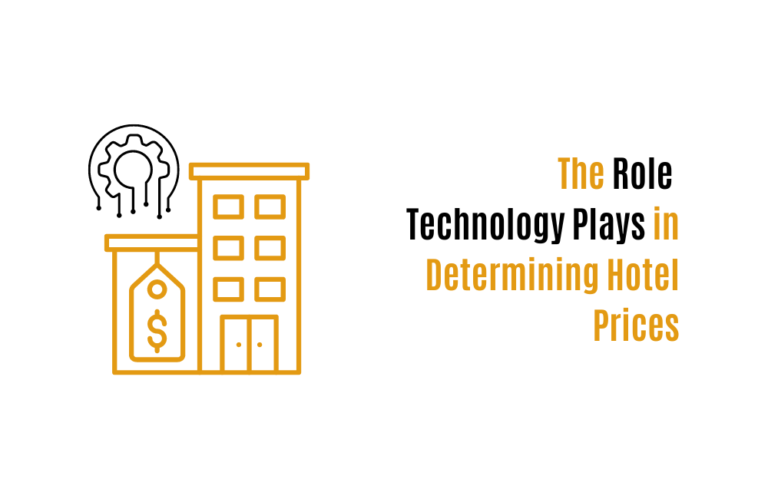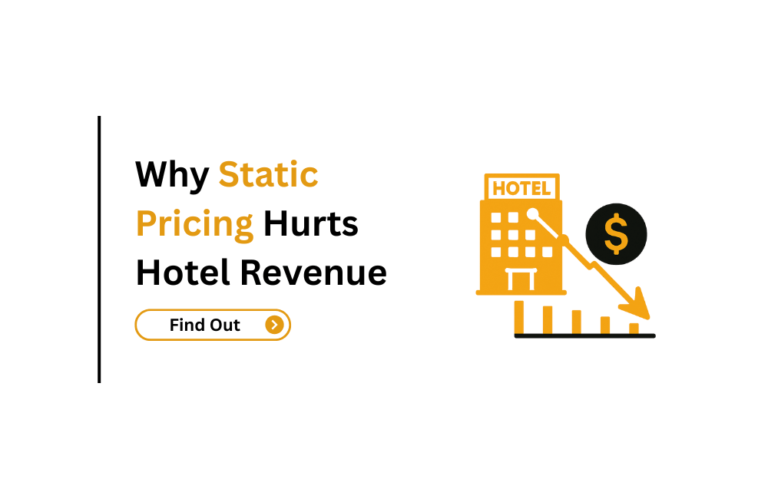Hotel Dynamic Pricing: Strategies, Examples & Revenue Growth Tips
The hotel industry has seen remarkable transformations over the years, but few innovations have reshaped it as profoundly as dynamic pricing, also known as demand-based pricing.
Unlike static rates, dynamic pricing helps hotels adjust room rates in real time based on factors like market demand, booking patterns, and competitor pricing. This approach doesn’t just help hotels stay competitive but also supports smarter hotel revenue management practices that drive long-term profitability.
A compelling example of its impact comes from a 2021 case study published by HospitalityNet. By strategically adjusting rates around high-demand events and closely monitoring price elasticity, a U.S. hotel achieved remarkable results: within just 28 days, RevPAR increased from $51.89 to $64.86, and by March, ADR had risen nearly $20 compared to December.
With advancements in technology, AI-driven analytics, and evolving hotel pricing models, hotels that embrace dynamic pricing are unlocking even greater revenue opportunities today.
In this article, we’ll explore everything you need to know about dynamic pricing: what it is, the different hotel pricing models, its key benefits, steps to implement it effectively, and the best tools to make it work seamlessly.
Let’s get started.
What is Dynamic Pricing?
Starting with the definition: Dynamic pricing strategy refers to a pricing approach where rates adjust dynamically based on real-time market demand fluctuations.
When the demand is high, a hotel can use a dynamic pricing strategy to charge higher rates. On the contrary, when demand slows down, rates will drop in an effort to capture and increase the higher occupancy rate.
It responds well to the increasing and decreasing demand as a given check-in date approaches and updates the rate as per remaining inventory and availability.
Hotels typically adopt one of three main pricing models.
Here’s a comparison of how static, dynamic, and hybrid pricing, so you can see where dynamic pricing stand apart: –
Feature / Approach Static Pricing Dynamic Pricing Hybrid Pricing Definition Fixed rates set for a long period (season or year). Rates fluctuate in real time based on demand, events, and competitor activity. Mix of fixed base rates + flexible adjustments during peak/low demand. Flexibility Very low – prices remain constant. Very high – adjusts daily, even hourly. Moderate – base is fixed, but adjustments apply in specific scenarios. Revenue Potential Low – risk of underpricing in high demand or overpricing in low demand. High – maximizes RevPAR and adapts to market shifts. Medium – better than static, but less optimized than fully dynamic. Customer Perception Stable and predictable. Can be seen as fair when aligned with demand, but may cause confusion if not transparent. Balanced – offers stability with some flexibility. Best For Budget or small hotels with limited resources. Large/mid-scale hotels in competitive, event-driven markets. Hotels transitioning from static to dynamic pricing.
Understand Dynamic Pricing With This Example
Let’s consider two different scenarios in the hotel industry to understand the power of dynamic pricing for hotel revenue management.
Scenario A: Off-peak Season

In this period, a city hotel has a high availability of 200 rooms. The demand is low, so the hotel reduces the rate from $200 to $100 per room, to encourage bookings. With this strategy, the hotel manages to sell 150 rooms, generating $15,000 in revenue.
Scenario B: Peak Season

In this period, a city hotel initially charges $100 per room. As demand spikes during a popular event, the hotel starts to fill up. After 100 rooms are booked, the hotel increases the rate to $150 per room. When the hotel has only 50 rooms left, the price further rises to $250 per room. Despite the increased rates, the limited availability and high demand ensure all rooms are booked, maximizing revenue.
So, now you know how implementing dynamic pricing in your hotel can help you achieve higher revenue. Let’s check out a few more advantages of dynamic pricing strategies.
Benefits Of Dynamic Pricing Strategy In Hospitality Industry?
1. Helps You Sell Rooms
The foremost advantage of the dynamic pricing model is that it helps you to sell rooms easily, even when the demand goes down in your area. Adjusting rates based on demand, season, and market trends gives you the flexibility to keep your rooms consistently booked while attracting more customers.
2. Boost Hotel Occupancy Rate
A hotel with a dynamic pricing model can boost its hotel occupancy rate to a much higher level. The rate you charge per hotel room to sell as many rooms as possible will determine your occupancy rate. Thus, a fair price must be charged as per the demand and market conditions.
3. Maximizes Profits
Another benefit of implementing a dynamic pricing strategy in the hotel industry is that it maximizes your profit. And also ensures that you get the most out of rooms, generates higher revenue than possible in a particular scenario.
4. Customer Loyalty
It provides a sweet spot between charging enough so that you can make money while charging a fair price so you don’t lose customers to the competition. It helps you to own customer loyalty while charging a decent amount that they are willing to pay.
As of now, you’re aware of how beneficial implementing dynamic prices in your hotel rooms is. Let’s learn how to do it.
How To Implement A Dynamic Pricing Strategy In Your Hotel?
Here is the step-by-step process of implementing a dynamic pricing strategy for your hotel:
1. Understand the Basics:
Before you can implement dynamic pricing, you need to understand its basic principles. This strategy involves varying your prices based on external and internal factors. It means you should be prepared to change prices often, even multiple times a day, in response to various triggers.
2. Analyze Your Market:
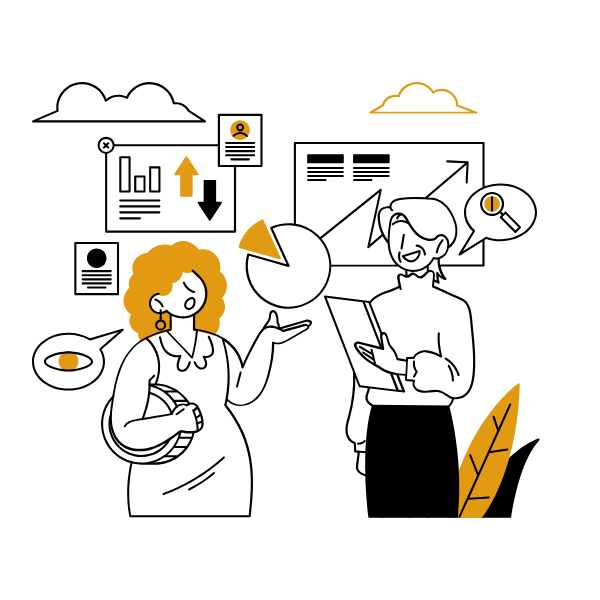
Thoroughly analyze your market and understand your competitor’s strategies. Use competitive set data to benchmark your prices against those of your direct competitors. Look at their pricing strategies in various market conditions.
💡 Pro Tip: If you’re looking for a reliable way to do this, check out this tutorial on extracting hotel pricing from multiple vendors into a Google Sheet. The screenshot below demonstrates how you can benchmark competitor prices across all major OTAs and see exactly what each is charging.

3. Use Advanced Software:
To implement a dynamic pricing strategy effectively, you need the best hotel dynamic pricing software. Such software uses dynamic pricing algorithms and AI to predict demand and suggest optimal prices based on a variety of factors, including booking pace, local events, seasonality, competitor’s rates, and more. Utilizing these tools is essential for setting dynamic pricing, as they can process large amounts of data much faster and more accurately than humans can.
4. Understand Your Guests:
Segment your customers based on various factors like booking channels, booking lead times, length of stay, etc. Analyse their price sensitivity and booking patterns. Understanding who your customers are and their purchasing behaviour is crucial in setting the right price at the right time.
5. Set Pricing Rules and Restrictions:
Create pricing rules based on different scenarios. These could include rules for lowering or raising prices when demand reaches a certain level, specific booking conditions during high-demand periods (like minimum stay requirements), or last-minute discounts to fill unsold rooms.
6. Continually Monitor and Adjust:

Dynamic pricing is not a set-it-and-forget-it strategy. For getting optimum outcomes, it requires constant monitoring and adjustments. Regularly review your pricing strategy, make adjustments based on its effectiveness, and test different strategies to see what works best. Keep an eye on the market and your competitors to ensure you’re not underpricing or overpricing your rooms.
To make better decisions, it’s important to explore various types of hotel APIs beyond just pricing, such as review and content APIs. The more comprehensive your data, the more informed your decisions will be. Check out these hotel API providers to access a wide range of insights.
7. Train Your Staff:
Your staff, particularly those in sales and front desk roles, should understand your dynamic pricing strategy. They should be equipped to explain rate fluctuations to guests and handle any related inquiries or concerns. Also, providing them professional training will ensure everyone is on the same page and can contribute to the successful implementation of your dynamic pricing strategy.
8. Be Transparent:
Price changes can lead to customer confusion or dissatisfaction if not handled correctly. Ensure your pricing is always transparent to your customers. Avoid hidden charges, and always clearly communicate what is included in the price.
So, now you are equipped with the know-how to implement dynamic pricing strategies to make it work effectively for you.
As previously mentioned, how monitoring competitor’s hotel pricing plays an important role in setting dynamic pricing. To make real-time hotel price monitoring easier for you, in the following video, we have explained how you can use Makcorps Hotel Pricing API to your advantage, so let’s check that out.
How Can Makcorps Pricing API Help You with Dynamic Pricing for Your Hotel?
Makcorps Hotel Price API instantly navigates through 200+ OTA platforms and provides you with accurate, real-time hotel pricing data from various OTAs.
But that’s not all for a comprehensive analysis.
Fret not, MakCorps also offers historical hotel prices data API that provides data from 2010 to the present.
By using this tool, you can gain a deeper understanding of current market price trends and competitor’s pricing.
With insight into what customers are willing to pay, you can optimize your pricing strategy to attract more guests and boost your business.
Makcorps Hotel Price API helps you save valuable time and money by collecting critical price-related data efficiently and effectively.
Overall, this software is user-friendly and delivers reliable, high-quality data that makes it an essential tool for hoteliers looking to enhance their pricing strategies.
Wondering? how can you use MakCorps API to get hotel pricing data, check out the following tutorial:
Frequently Asked Questions By Hoteliers:
What Are the Ethical Concerns Around Dynamic Pricing?
The primary concerns stem from perceived unfairness. Customers may feel singled out if they see significantly different prices for the same room. Without clear communication, it can erode trust. Additional red flags include price discrimination, lack of transparency, and potential algorithm bias that disadvantages certain groups.
What Are the Common Challenges Hotels Face When Implementing Dynamic Pricing?
Hotels often struggle with guest backlash when prices change too frequently or unexpectedly. They also face operational hurdles dynamic pricing requires accurate, real-time data and seamless systems integration, which can be resource-intensive.
How Does Dynamic Pricing Help Hotels Maximize Revenue and Occupancy?
By adjusting rates in response to demand, local events, and competitor actions, hotels can sell more rooms at the right price. This ensures high occupancy during low-demand days and maximum revenue capture during peak seasons or events.
Conclusion:
Dynamic pricing is a proven strategy that helps hotels optimize revenue, boost occupancy, and stay competitive in fast-changing markets. When aligned with revenue management principles, it allows you to capture maximum value from every booking.
To succeed, hoteliers must factor in supply and demand, seasonality, target segments, and competitor behaviour. The difference between success and missed opportunities often lies in how quickly and accurately you can respond to these variables.
With the rise of smart technologies, manual guesswork has been replaced by data-driven, automated solutions that ensure precision and efficiency. This is where tools like the Makcorps Hotel Price API become indispensable, as they offer real-time competitive pricing data from 200+ OTAs and historical insights to make smarter pricing decisions.
👉 If you’re ready to implement dynamic pricing and maximize your hotel’s revenue potential, start by integrating Makcorps into your strategy today.

Neha Jangid writes for Makcorps, bringing over three years of hands-on experience in the hotel and travel data space. She digs deep into hotel APIs, flight info, and travel tech, turning complex details into easy-to-understand content that actually helps businesses and readers. Neha works closely with hospitality sites and industry experts to stay sharp and share practical insights. Her goal is simple: make travel data useful, not confusing.

